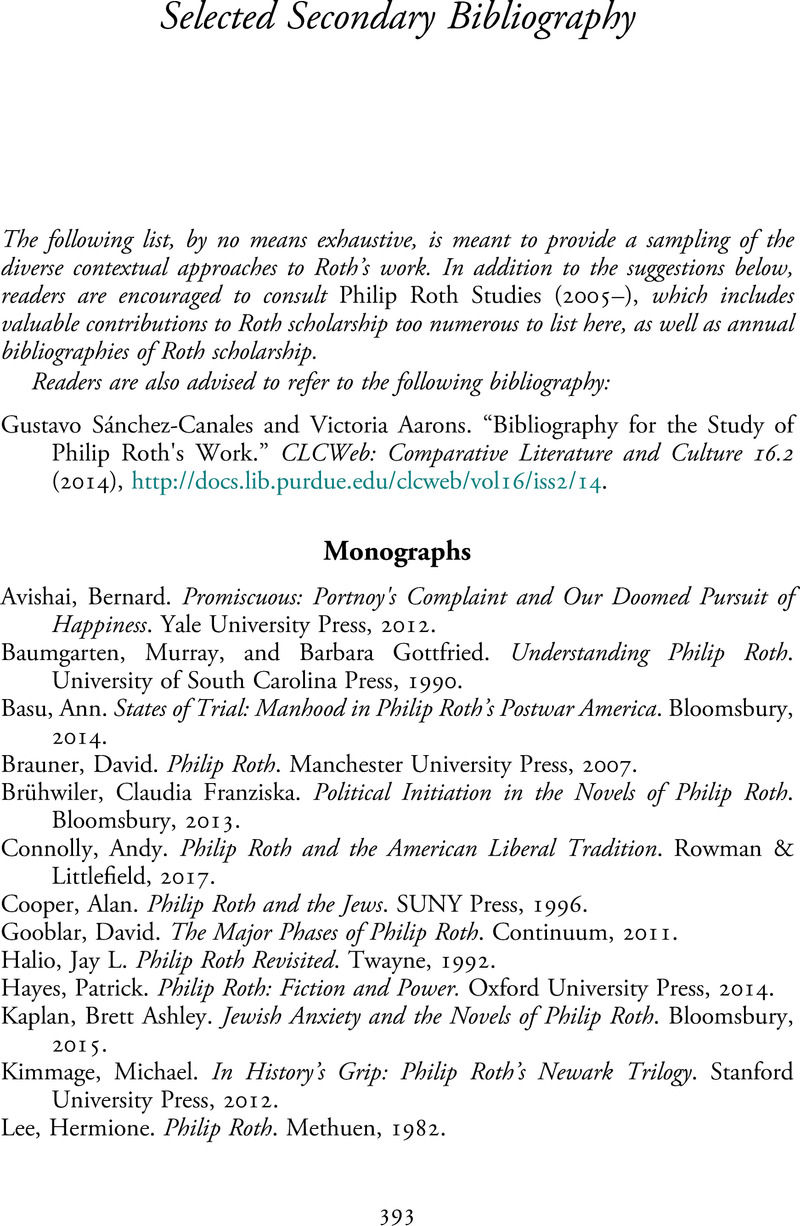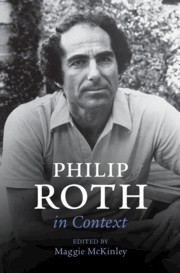Book contents
- Philip Roth in Context
- Philip Roth in Context
- Copyright page
- Contents
- Notes on Contributors
- A Note on References and Abbreviations
- Introduction
- Part I Life and Literary Contexts
- Part II Critical Contexts
- Part III Geographical Contexts
- Part IV Theoretical Contexts
- Part V Jewish American Identity
- Part VI Gender and Sexuality
- Part VII Political Contexts
- Part VIII Roth’s Legacy
- Primary Bibliography
- Selected Secondary Bibliography
- Index
- References
Selected Secondary Bibliography
Published online by Cambridge University Press: 15 July 2021
- Philip Roth in Context
- Philip Roth in Context
- Copyright page
- Contents
- Notes on Contributors
- A Note on References and Abbreviations
- Introduction
- Part I Life and Literary Contexts
- Part II Critical Contexts
- Part III Geographical Contexts
- Part IV Theoretical Contexts
- Part V Jewish American Identity
- Part VI Gender and Sexuality
- Part VII Political Contexts
- Part VIII Roth’s Legacy
- Primary Bibliography
- Selected Secondary Bibliography
- Index
- References
Summary

- Type
- Chapter
- Information
- Philip Roth in Context , pp. 393 - 398Publisher: Cambridge University PressPrint publication year: 2021



